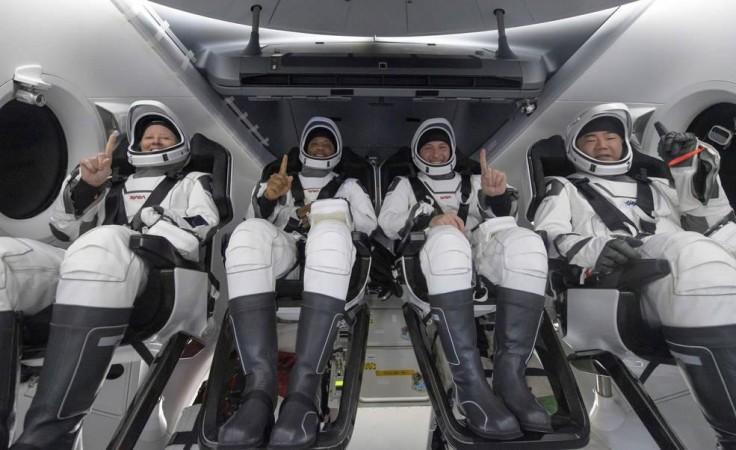Four astronauts, part of SpaceX and NASA's first commercial crew programme, returned to Earth safely on Sunday after their six-month mission aboard the International Space Station, the US space agency said.
The astronauts -- NASA's Michael Hopkins, Victor Glover, and Shannon Walker, along with Japan Aerospace Exploration Agency (JAXA) mission specialist Soichi Noguchi -- returned to Earth in a parachute-assisted splashdown at 2:56 a.m. EDT off the coast of Panama City, Florida on Sunday.
Crews aboard SpaceX recovery vessels successfully recovered the spacecraft and astronauts. After returning to shore, the astronauts will fly back to Houston, NASA said.

Back home, safe and sound
"Welcome home Victor, Michael, Shannon, and Soichi, and congratulations to the teams at NASA and SpaceX who worked so hard to ensure their safe and successful splashdown," NASA Administrator, Senator Bill Nelson, said.
"We've accomplished another incredible spaceflight for America and our commercial and international partners. Safe, reliable transportation to the International Space Station is exactly the vision that NASA had when the agency embarked on the commercial crew programme," he added.
The spacecraft named Resilience, by the Crew-1, was launched on a Falcon 9 rocket on November 15, 2020. The six months marks the longest-duration mission of a crewed American spacecraft to date.

Overall, Hopkins, Glover, Walker, and Noguchi travelled 71,242,199 statute miles during their 168 days in orbit (with 167 days aboard the space station), completing 2,688 orbits around Earth. With splashdown, the crew also broke the American crewed spacecraft mission duration record of 84 days, 1 hour, 15 minutes, set by the final Skylab crew in February 1974.
Crew-1 also is the first night splashdown of a US crewed spacecraft since Apollo 8's predawn return in the Pacific Ocean on December 27, 1968, with NASA astronauts Frank Borman, Jim Lovell and Bill Anders.
Throughout their mission, the Crew-1 astronauts contributed to scientific investigations and technology demonstrations, in addition to spacewalks and public engagement events, while aboard the orbiting laboratory. From studying protein crystal development to advance new drug discoveries, to demonstrating robotic assistant technologies, their work advances exploration of the universe while bringing benefits back to Earth.
The splashdown also comes just over one week after the launch of NASA's SpaceX Crew-2 mission, the second long-duration mission. The Crew-2 astronauts launched April 23 and will live and work aboard the station until their return to Earth in about six months, NASA said.
(With inputs from IANS)

















